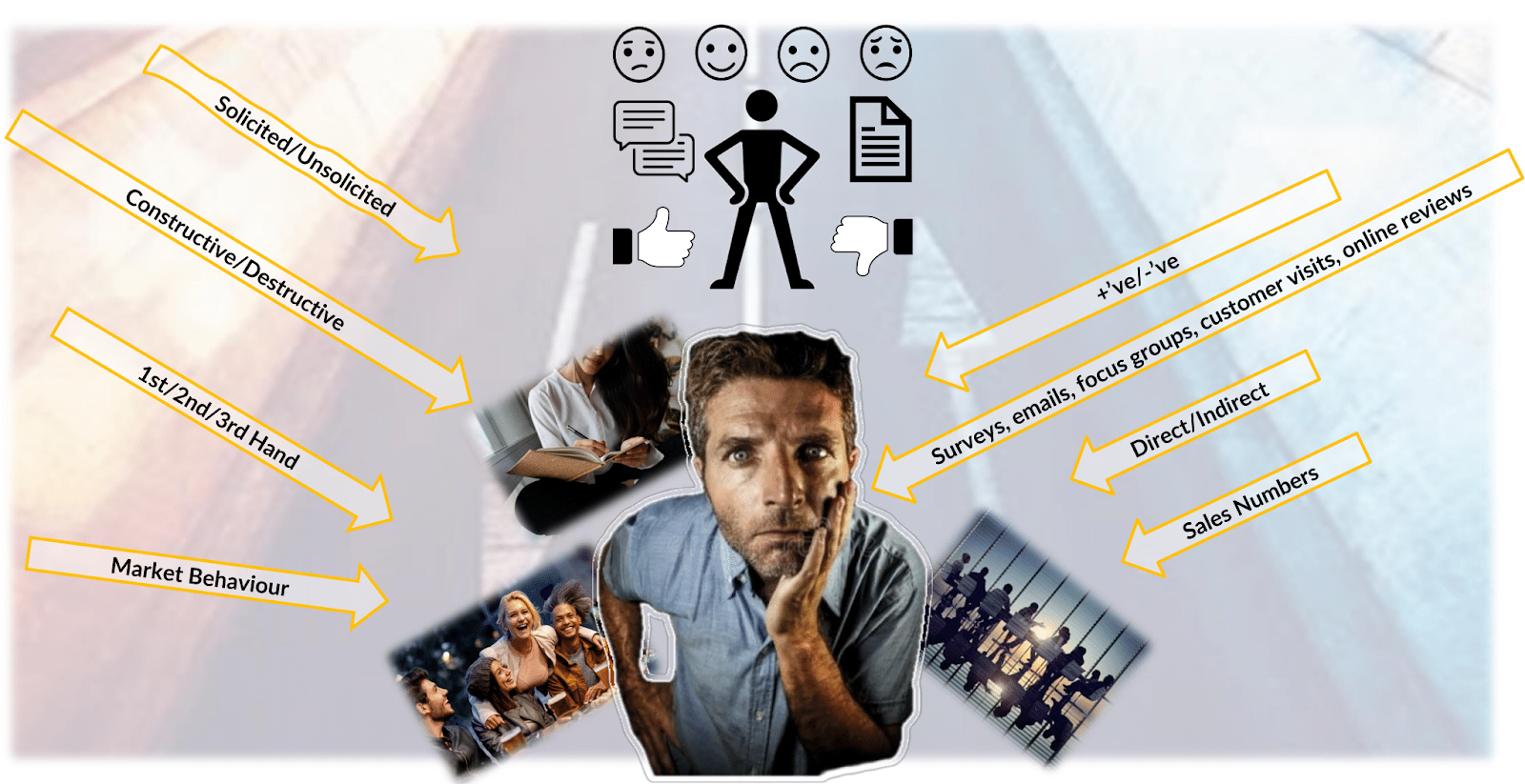This article is based on a presentation given by Mina Kirollos at the Product Marketing Summit in Sydney. Catch up on this presentation, and others, using our OnDemand service. For more exclusive content, visit your membership dashboard.
Let’s start with a story.
A couple of years ago, I started dating someone new. We had tons of things in common, including our love of food. She often talked about how her mom was an awesome cook and she couldn’t wait for me to try her food.
After a few months together, things were going well, and I met her family – nice people. We were having dinner and the food came out. I took one bite, and my date asked, “So, how's the food? Do you like it?”
I didn’t know what to say. It was horrendous.
This incredibly awkward experience brought home to me just how uncomfortable giving honest feedback can make people – on both sides.
That’s as true in the realm of product marketing as it is at the dinner table. We all know feedback is important, but it can be confronting, so we don't always act on it in the way we should. Today, we’ll talk about how to embrace feedback and use it to its full potential.
Feedback is part of our daily lives – and it's a two-way street. We give and receive feedback through words, body language, facial expressions, and more. We learn to interact through feedback from birth, and not just verbal feedback. It’s everywhere – in our personal and professional lives.
The sheer volume of feedback that product marketers receive can be overwhelming. You've got solicited, unsolicited, constructive, destructive, firsthand, secondhand, and thirdhand feedback.
And then there’s indirect feedback in the form of market behavior data, sales numbers, and more. If you don’t know how to process it, you’ll get overwhelmed fast.

Coming back to my dinner story, it shows the importance of interpreting feedback properly. Although I lied and said the food was good, my then-girlfriend didn’t pick up on my nonverbal feedback.
Customers often do the same; they feel awkward and give false positive feedback. If we don’t pick that up, we can head down the wrong path, like the girl’s mom did. She kept serving the same food because she didn’t read my lack of enthusiasm and thought I loved it. There’s only so much overcooked salmon and fried Brussels sprouts one person can eat!
This shows that properly receiving feedback matters as much as giving good feedback.
Today, I won’t discuss how to create feedback surveys or solicit feedback – we can all google those basics. Instead, I’ll share my 17+ years of experience parsing complex feedback to determine smart next actions. I’ll also run through a case study.
My goal is for you to develop a mental model that will allow you to dig deeper into the feedback you receive and action it properly.
The complex dynamics of customer feedback
A bit about myself - I'm a reformed engineer with degrees in computer and biomedical engineering. I’ve worked in the medical device industry for over 17 years in various roles like sales, marketing, product management, and product marketing from global to regional to local levels.
I'm an innovation nerd – I love seeing technology progress, especially when something disrupts familiar markets. I both give and receive a lot of what people call “disruptive feedback” in my job and personal life.
My thinking on feedback and customer behavior stems from my career in medical technology. When things are going well, you generally don’t hear anything. If they’re going really well, you might get some slightly positive feedback. But when things go bad, they go really bad and you definitely hear about it.
When I started my first job as a sales rep at a surgical company, I spent three weeks shadowing seasoned reps and meeting customers. Then I went to my first conference. It was awesome as a fresh college grad: free drinks, free food. Life was great that Friday night – until I got an angry call from an operating theater manager.
She went ballistic. She yelled about how I’d ruined her life and patients’ lives, our products were crap, and she’d never order from us again. She was screaming so loud that everyone around me could hear her rant. I was like, “What’s happening here?” - I’d only been working there for a few weeks! Turns out it was over a simple backorder issue – the product itself was fine.
The reps around me (who overheard this whole conversation because she was yelling so loud) explained what was going on. The backorder issue meant that, although the hospital had enough of the product to keep them going, the surgeon would be mad about not having a stockpile for future procedures. He’d likely yell at the theater manager, and she was taking that out on me.
That incident really helped me grasp the complex dynamics behind customer feedback. There are so many factors that impact the feedback signals we receive as sales reps, product marketers, or product managers. Feedback rarely exists in a vacuum and shouldn’t necessarily be taken at face value.
Think back to the last time you wrote a negative review or gave bad feedback. Was emotion involved – maybe anger at an exceptionally bad experience? Were you having a bad day in general? What was your knowledge level on the subject? What was your goal in providing feedback?
For instance, I wrote an angry review recently when a restaurant put the wrong sauce on my steak and, when I pointed out their mistake, just scraped it off and put on a different sauce. My goal was just to vent.
Similarly, I wrote a glowing review for my mechanic not so long ago, even though I don’t know much about cars and had no idea what they actually did.
How to filter out the noise
Often, the feedback we hear is more noise than pure signal. It’s being muddled with market dynamics, the customer’s history with your company, emotions, confusion, competitors, loyalty, and more in the mix.
We need to sort all that into two main buckets:
- The actionable piece – after all, people expect some response when they provide feedback.
- Everything else – retain it, build on it, and use it to inform future feedback analysis – like machine learning where your brain is the machine.
If you’re aiming for market leadership, taking feedback at face value just won’t cut it. So, we’re going to explore a model for separating actionable feedback from the noise. This isn’t a physical model you can plug into Excel or your CRM (customer relationship management) platform; it needs the human touch. It’s based entirely on experience – specifically experience related to your core business.
So what does this model involve?
Let’s take a look.


















 Follow us on LinkedIn
Follow us on LinkedIn



.svg?v=176eabd947)